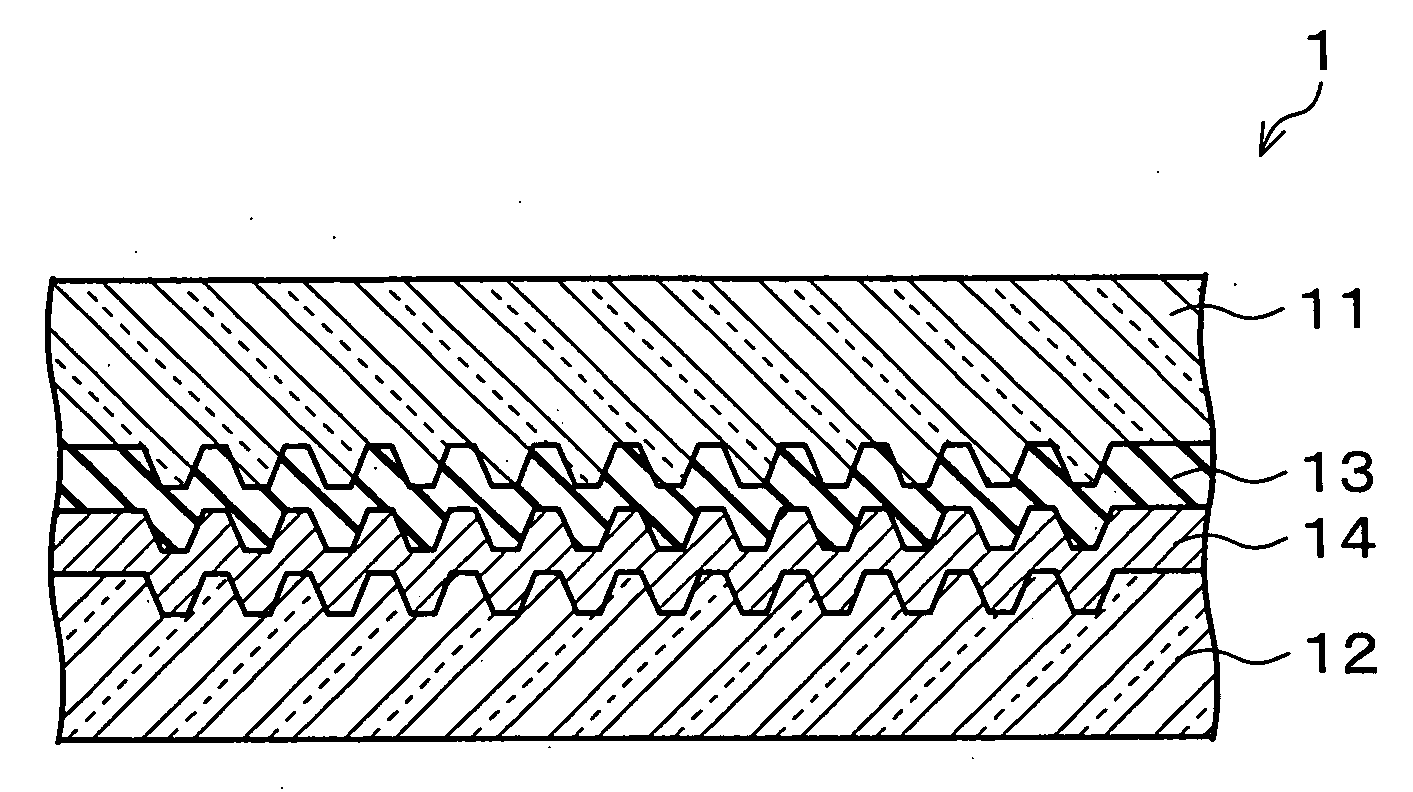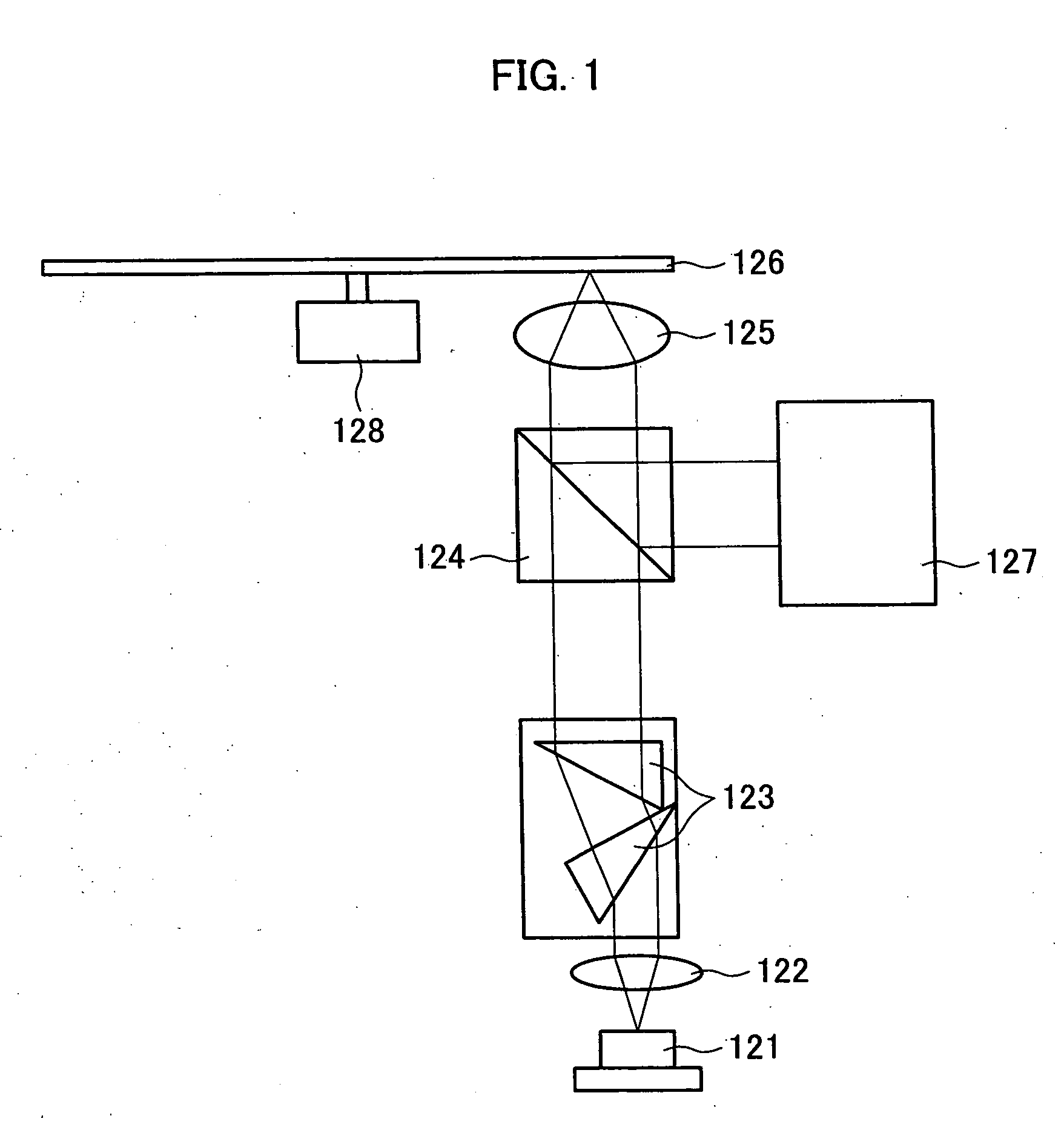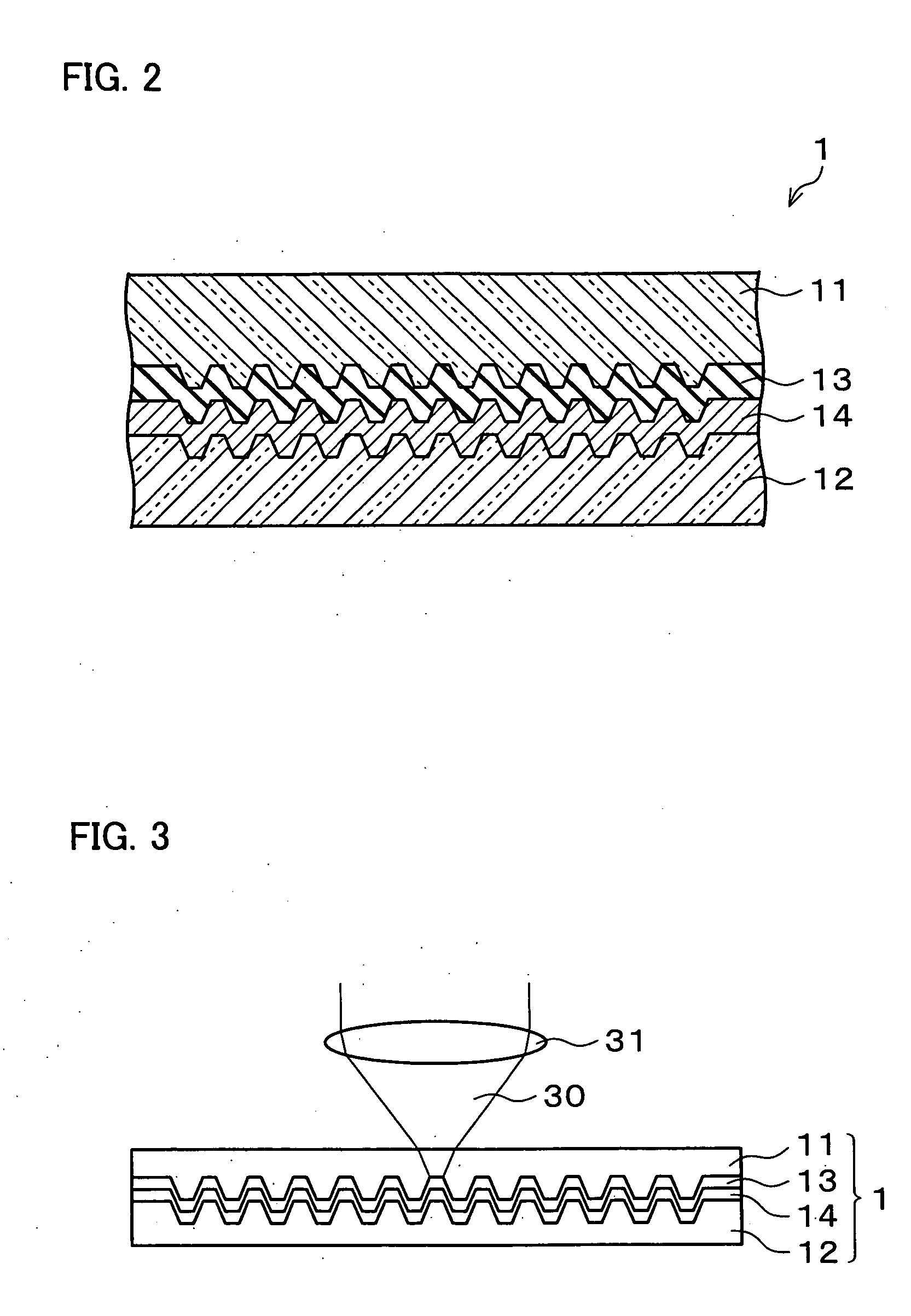Optical information recording medium, method for reproducing optical information recording medium, and optical information processing apparatus using optical information recording medium
- Summary
- Abstract
- Description
- Claims
- Application Information
AI Technical Summary
Benefits of technology
Problems solved by technology
Method used
Image
Examples
embodiment 1
[0077] One embodiment of an optical information recording medium of the present invention will be described below with reference to FIG. 1 through FIG. 17.
[0078] Firstly explained is a major structure of a recording / reproducing apparatus (optical information processing apparatus) which can record information onto the optical information recording medium and which can reproduce information therefrom.
[0079] The recording / reproducing apparatus includes a laser light source, light collection optical means, relative movement means, photoelectric conversion means, servo means, address information detection means, reproduction signal demodulation circuit, and the like.
[0080] A specific example of the laser light source is a semiconductor laser emitting light whose wavelength is 405 nm; or the like.
[0081] The light collection optical means collects, on the optical information recording medium, laser light (laser beam) emitted from the laser apparatus. The light collection optical means ...
embodiment 2
[0198] Another embodiment of the present invention will be explained below. For ease of explanation, materials having the equivalent functions as those shown in the drawings pertaining to Embodiment 1 will be given the same reference symbols, and explanation thereof will be omitted here.
[0199] Firstly explained is a structure of an optical information recording medium of the present embodiment. See FIG. 15 illustrating the structure of the present embodiment.
[0200] As shown in FIG. 15, the optical information recording medium 2 has a structure obtained by providing a light absorbing film 15 in the optical information recording medium 1 of Embodiment 1 instead of the reflecting film 14. Note that, a reproduction method thereof, a manufacturing method thereof, an evaluation apparatus used herein, and an evaluation method used herein are the same as those in Embodiment 1, respectively.
[0201] Unlike the reflecting film 14, the light absorbing film 15 is not made of a metal having a h...
embodiment 3
[0215] Still another embodiment of the present invention will be explained below with reference to FIG. 18 and FIG. 19. For ease of explanation, materials having the equivalent functions as those shown in the drawings pertaining to Embodiment 1 will be given the same reference symbols, and explanation thereof will be omitted here.
[0216] An optical information recording medium according to the present embodiment is a readable / recordable (either write-once-read-many or re-writable) optical information recording medium 3 as shown in FIG. 18 and FIG. 19. Provided in the optical information recording medium 3 are a transparent resin layer 11, a super resolution reproducing film 13, a recording layer 16, and a substrate 12 in this order from the side via which a recording / reproduction beam 32 enters. The recording / reproduction beam 32 is a light beam for use in recording and reproduction. The super resolution reproducing film 13 is the same as that of Embodiment 1.
[0217] The recording l...
PUM
 Login to View More
Login to View More Abstract
Description
Claims
Application Information
 Login to View More
Login to View More - R&D
- Intellectual Property
- Life Sciences
- Materials
- Tech Scout
- Unparalleled Data Quality
- Higher Quality Content
- 60% Fewer Hallucinations
Browse by: Latest US Patents, China's latest patents, Technical Efficacy Thesaurus, Application Domain, Technology Topic, Popular Technical Reports.
© 2025 PatSnap. All rights reserved.Legal|Privacy policy|Modern Slavery Act Transparency Statement|Sitemap|About US| Contact US: help@patsnap.com



